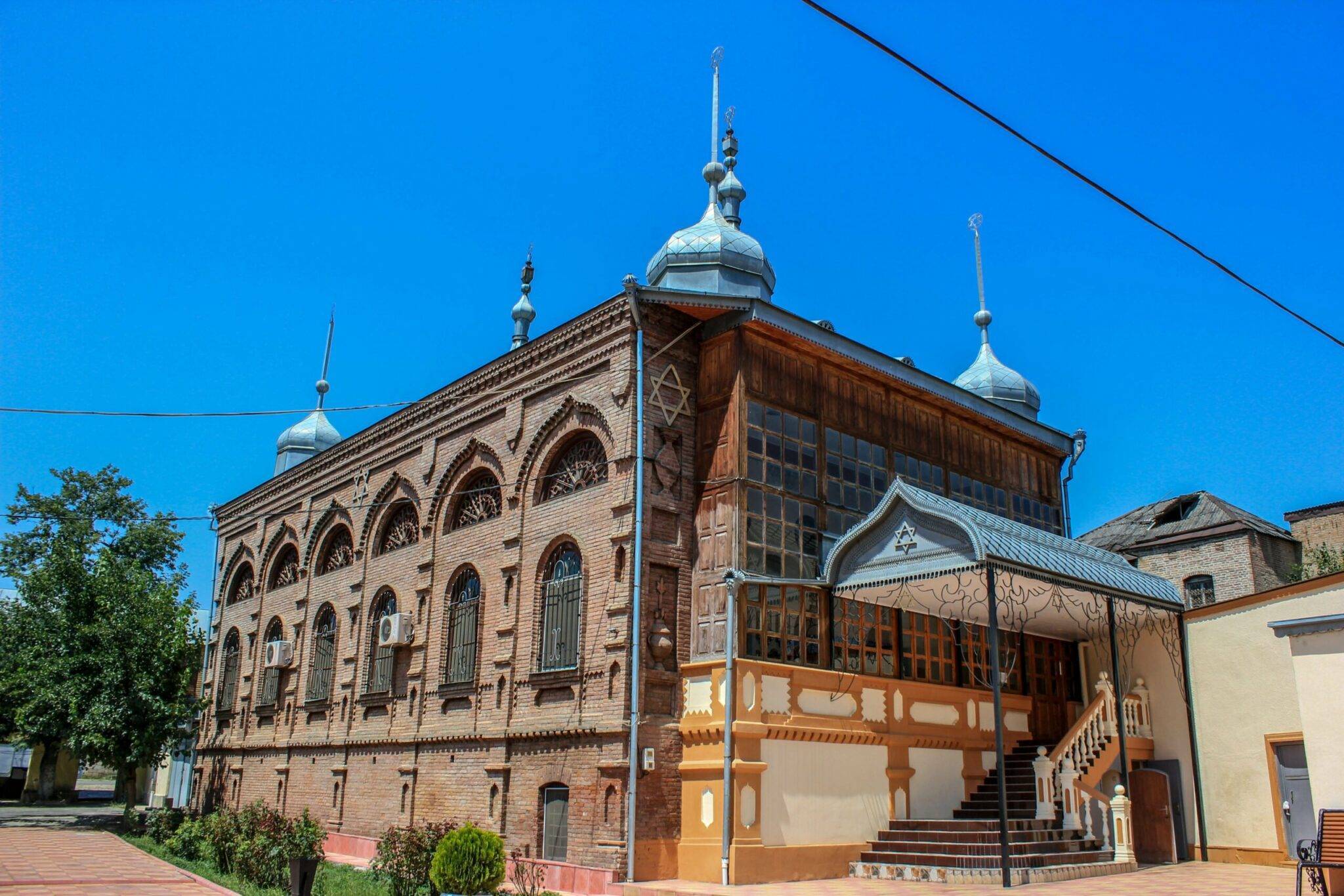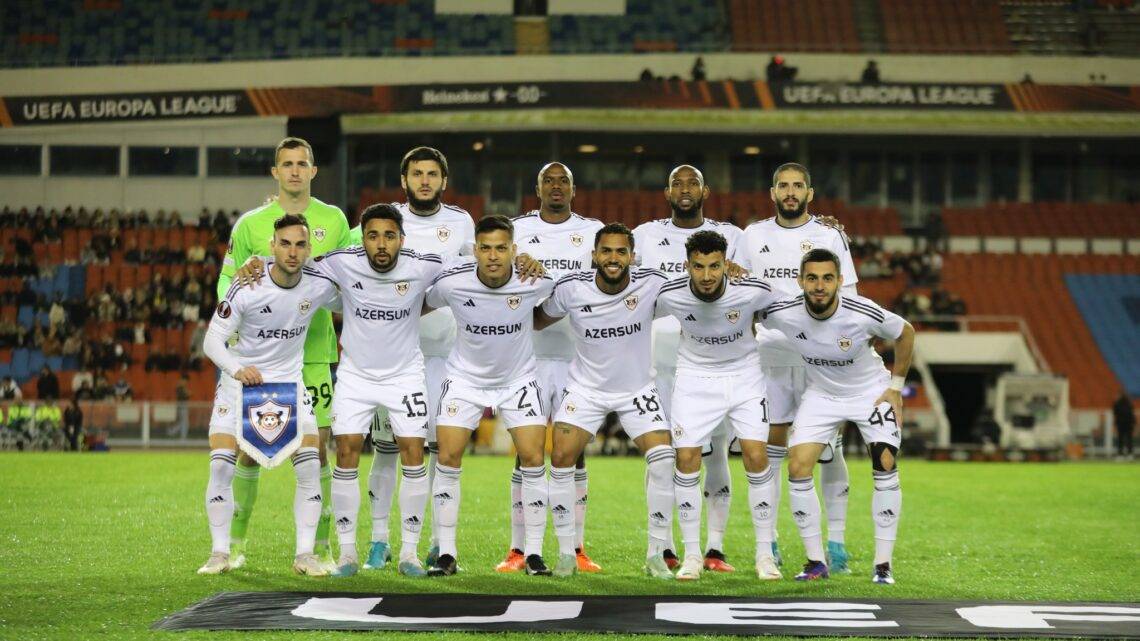
The city of Aghdam in Azerbaijan and the football club Qarabağ FC
26. октября 2023 0 Автор F. MasimovaAghdam district is located between Fizuli, Askeran, Barda, Khojavand, Kelbajar, Terter and Aghjabedi districts. The Gargar River flows three kilometres from the district centre. The district centre itself, Aghdam, is located on the edge of the Karabakh plain, at the eastern foot of the Karabakh Range. It is separated from Baku by 362 kilometres.
The name Aghdam comes from the Azerbaijani «ag» and «dam», which mean «white» and «house», respectively.
Aghdam district was a rather promising region of Azerbaijan, where different types of industry — light, heavy, food, and agriculture — were well developed. Before the Karabakh war (1991-1994), Aghdam had aerospace apparatus factories, machine-tool equipment factories, a car and tractor repair plant, a mestizo-furniture factory, an asphalt factory, and many food and textile factories. Other important infrastructural facilities include an airport and two railway stations, a music technical school named after U. V. V. Kovalev, and a railway station. У. Hajibekov, the State Drama Theatre named after A. Khagverdiyev.
Aghdam was known throughout the USSR for its cognac factory. It was also a peculiar centre of historical and cultural monuments of this region of Transcaucasia — a great number of mosques, mausoleums, museums were located on the territory of Aghdam district.
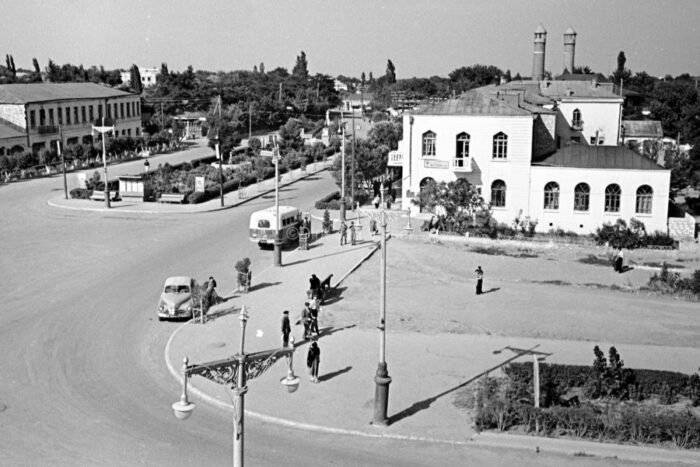
The total territory of Aghdam district is 1,150 square kilometres. 1 700 hectares of the district were allocated for forest lands and 28 000 hectares — for the needs of agriculture, mainly cattle breeding, viticulture and cotton growing were developed here.
Aghdam was founded in the XVIII century and received the status of a city in 1828. By 1839, besides Aghdam, two settlements (Acharli, Guzanli) and 123 villages were formed in the district. In 1912, according to «Caucasian Calendar», 629 people, mostly Azerbaijanis, lived in Aghdam, which at that time was a part of Shusha district of Elisavetpol province. By 1989, according to the All-Union Population Census of the USSR, the number of residents of Aghdam increased to 28,301. In 2010, the population of Aghdam was 204 thousand people.
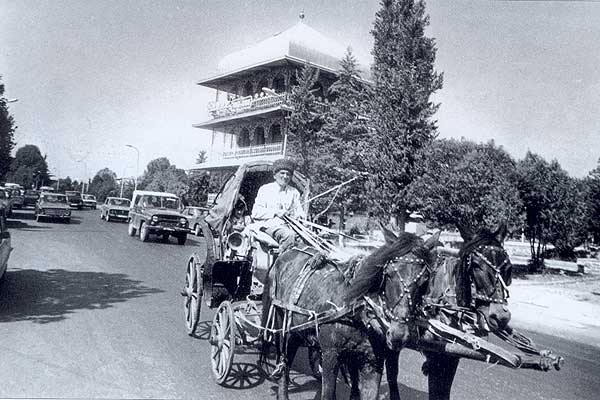
Football club Qarabağ Ağdam FC
Aghdam has its own professional football club, Qarabağ FC, ten-time champion of Azerbaijan and seven-time winner of the Azerbaijan Cup. It is the first football team in the history of Azerbaijan to qualify for the group stage of the Champions League.
Actually, the football club received its final name, «Qarabağ» in 2004, and before that it was called «Mehsul», «Shafagh»», «Cooperator», «Qarabagh», «Qarabagh-Azersun».
The football club officially represents the city of Aghdam. Before the Karabakh war, the football team participated in home matches in Aghdam, and from the mid-1990s to mid-2009 — in Baku. Later, in April 2009, the football club redeployed to Guzanli settlement of Agdam district and hosted guests at the stadium of the Olympic Complex. Since September 2015, Qarabag has been playing its home matches in the Surakhani district of Baku, at the new 5,800-seat Azersun Arena stadium.

The football club plays its Eurocup matches at the T. Bahramov Republican Stadium and Baku Olympic Stadium, with a capacity of 31,200 and 69,870 respectively.
Historical background. The history of the football club begins in the 1950s — «Mehsul» appeared after the completion of the construction of the city stadium. In 1966, the team played in the championship of Azerbaijan SSR for the first time, showing good results — the club managed to take the fourth place. Two years later «Mehsul» took the second place, but after this victory in the team begins to discord and the football club collapsed, remaining out of the championships until 1977.
1977 was the second birth for the team. The name of the club was changed to «Shafag» and immediately the club started to play in the second league of the championship of Azerbaijan SSR. For five years the team is the only one representing Agdam in the championship. From 1982 to 1987 the football club acts under a new name — «Cooperator».
For the first time «Garabagh» became the champion of the Azerbaijan SSR in 1988, receiving the right to participate in the second league of the championship of the SSR. A year later the team played in the ninth zone of the USSR championship, taking 11th place there.
After the collapse of the USSR, in 1992, the first championship was held in independent Azerbaijan. In 1993, hard times came for Agdam players — Agdam was occupied by Armenian armed forces. Allahverdi Bagirov, who once coached the players, died in a car, blown up on a mine.
The club started to play its home games in Baku. From 1998 to 2001 the club showed the weakest result among the strongest teams, and due to poor funding the leading players began to leave the team. Patrons came to the rescue: in 2001 a large holding of Azerbaijan «Azersun» took patronage over the club — in this period it was possible to return almost all the players who had left the team earlier. Since that time the team was called «Garabagh-Azersun», and in 2003/04 it managed to win the third place of the championship.
The next season the team was coached by Igor Ponomarev, a former Neftchi forward. The best Azerbaijani players were invited to the club, and in 2004 the team returned its name «Qarabağ FC». The logo of the football club was also designed — Karabakh racehorses.
The 2005/06 season started under the leadership of the young coach Elkhan Abdullayev, but during the winter break he was replaced by the more experienced Beyukagu Agayev — it was under Agayev that the team managed to take the Azerbaijan Cup, getting a ticket to the UEFA Cup.
The next season was somewhat unsuccessful for the team, as a result of which the head coach was replaced again — Turkish specialist Rasim Kara took over. Since 2009, the club has regularly played in the UEFA Europa League, with the team reaching the play-off round three times.
The 2014/15 season was also successful for Qarabag, the team became the country’s champion for the second time, earning the right to play in the Champions League. As a result of the matches, Qarabag gained the right to play in the group stage of the European tournament. In the next two seasons, the club also reached the group stage of the UEFA Europa League.
In 2017, Qarabag reached the group stage of the Champions League. As a result, Qarabag drew with Atletico Madrid, drew with Atletico Madrid, lost to Chelsea and Italy’s Roma, eventually finishing in last place in their Group C.
"Azerbaijani wine Aghdam - port white."
The Russian media reports about the increased interest of collectors from the Russian Federation in Azerbaijani port wine «Aghdam».
In Russia, collecting various attributes of the Soviet Union has recently reached its peak — collectors collect equipment, badges, medals and clothes from the Soviet times. And the legendary brand of winemakers from Azerbaijan «Aghdam» also arouses great interest. Which is not surprising.
Statistics testifies: the Soviet people loved port wine in the country every year produced about 200 million decalitres of port wine. For comparison: the share of all other types of wine, including vintage, dry, champagne, was only 150 million decalitres.
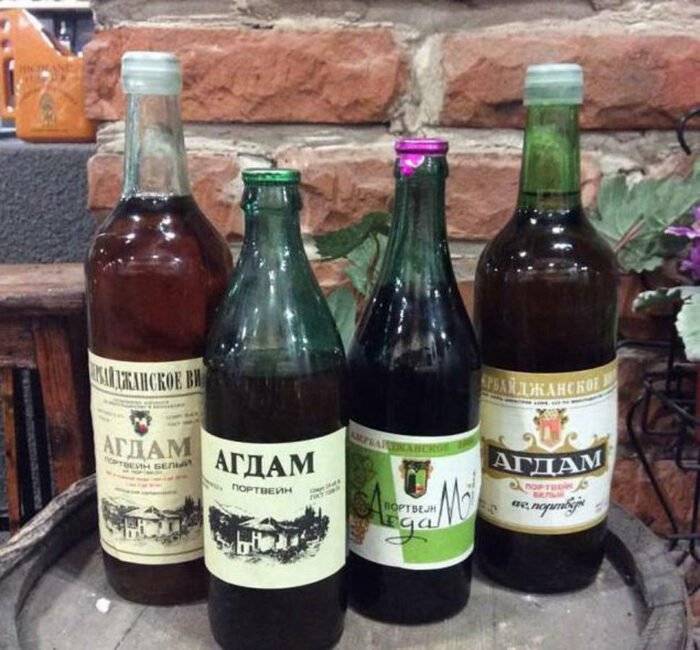
Aghdam» wine was produced at a cognac factory and enjoyed great popularity in the USSR and the post-Soviet space. The thick, sweet and tart flavour was complemented by low cost, accessibility and «efficiency». The drink could be bought even in the most remote corners of the country, and cost 2 roubles and 2 kopecks (you could turn in a bottle and get back 17 kopecks). The drink’s strength of 19% was enough to quickly get the desired effect. Therefore, it is not surprising that Azerbaijani Aghdam was considered the golden mean among all alcoholic drinks.
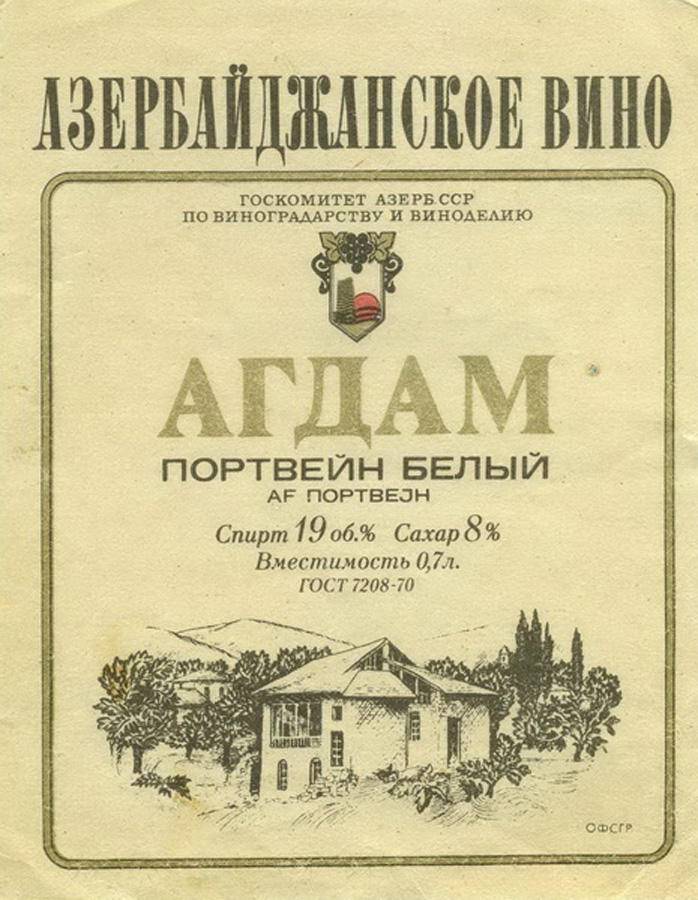
Aghdam: Hiroshima of the Caucasus
Aghdam, once a flourishing white stone city, is now called a ghost town. In the best of times, Aghdam’s population reached 50,000 people. Until 2020, no one lived here. Because there’s nowhere to go. The city was completely destroyed by Armenian armed gangs. Only the foundations of buildings and a lonely Muslim mosque remain, which still stands in the centre of the city, presenting a striking contrast to the surrounding chaos and devastation.
Aghdam, during the Karabakh war, became one of the outposts of Azerbaijani troops. The Armenians occupied the city for two months, from early June 1993. Several unsuccessful attacks, and the last one, Aghdam was ringed and bombarded with Grad rockets from nearby mountain peaks.

By <a href="//commons.wikimedia.org/wiki/User:KennyOMG" class="mw-redirect" title="User:KennyOMG">KennyOMG</a> - <span class="int-own-work" lang="en">Own work</span>, CC BY-SA 4.0, Link
In July of the same year, the UN Security Council adopted Resolution No. 853, which condemned the seizure of Aghdam and ordered the immediate, unconditional and complete withdrawal of the occupation forces from the Aghdam district. Both this and subsequent resolutions were left unheeded by the Armenian forces.
After full control over the city was established, the Nagorno-Karabakh troops began to systematically destroy everything from residential houses to industrial buildings. 38 factories and state farms, 12 industrial enterprises, 105 medical institutions, 24 construction and assembly departments, 99 clubs, 271 cultural centres, 74 schools, 67 departments and residential houses fell under occupation. And everything was destroyed.

By <a href="//commons.wikimedia.org/wiki/User:J_budissin" title="User:J budissin">Julian Nyča</a> - <span class="int-own-work" lang="en">Own work</span>, CC BY-SA 3.0, Link
The city was under Armenian occupation for about 30 years and was closed to the public. Azerbaijanis could not visit their homeland — towns and villages under occupation. However, some of them decided to secretly visit the town or village where they were born and grew up. For example, a few years ago, two groups of Azerbaijanis who grew up in the mountainous regions of Karabakh visited their homeland, penetrating through the defence lines of the Armenian army, and came back with photos and videos of their trip. And all the photos and videos show virtually the same thing — the ruins into which the once beautiful region has turned.
Agdam rises from the ashes!
After liberation in May 2021, the city is going through tremendous changes. President Ilham Aliyev has laid the foundations of a new road and the first residential building, and is now finishing the reconstruction of roads and power lines. The government’s plan to return 10,000 residents by 2026 and 100,000 in the following years is becoming a reality with the construction of new neighbourhoods.
Aghdam, formerly an industrial centre, is again aiming at development in this direction. An industrial park is being built, a mosque and the Imaret complex are being restored. Plans to build a stadium for the Qarabağ football team speak of future international competitions. And with the advent of Karabakh University and the Museums of Occupation, Aghdam will become both an educational and cultural centre.
Not only Azerbaijani property developers, but also companies from the United States, Canada, the Netherlands, Turkey and other countries are involved in the creation of the new Aghdam. The city is being rebuilt not only physically, but is also becoming a bridge between different parts of the world.
Teilen mit / Поделитесь
- Нажмите, чтобы открыть на Facebook (Открывается в новом окне)
- Нажмите, чтобы поделиться в Telegram (Открывается в новом окне)
- Нажмите, чтобы поделиться в WhatsApp (Открывается в новом окне)
- Нажмите, чтобы поделиться на Twitter (Открывается в новом окне)
- Нажмите, чтобы поделиться на Reddit (Открывается в новом окне)
- Нажмите, чтобы поделиться записями на Pocket (Открывается в новом окне)
- Послать ссылку другу по электронной почте (Открывается в новом окне)
- Нажмите для печати (Открывается в новом окне)
- Ещё
Больше на Masim💛vа
Subscribe to get the latest posts sent to your email.
Похожие записи:
- The most beautiful villages and hamlets in Azerbaijan
- Albanian Church and Kish village in Azerbaijan
- Yashil Bazaar in Baku Azerbaijan - Green bazaar of…
- Azerbaijan's 10 must-see cities for tourists -…
- Novruz in Azerbaijan: How Novruz Bayram is…
- History of the Doukhobor Religious Sect and Its…
- Country life vlog in Azerbaijan - Who are they?
- Molokan village Ivanovka in Azerbaijan
Об авторе
Дорогие читатели, мой блог в основном о жизни в Германии. Я очень рассчитываю на то, что информация в моем блоге помогает вам. Решили поблагодарить меня и помочь в развитии моего блога? Подписывайтесь на меня в соц. сети. Делитесь ссылками с теми, для кого представленная в блоге информация может быть полезной, комментируйте и ставьте лайки :).
